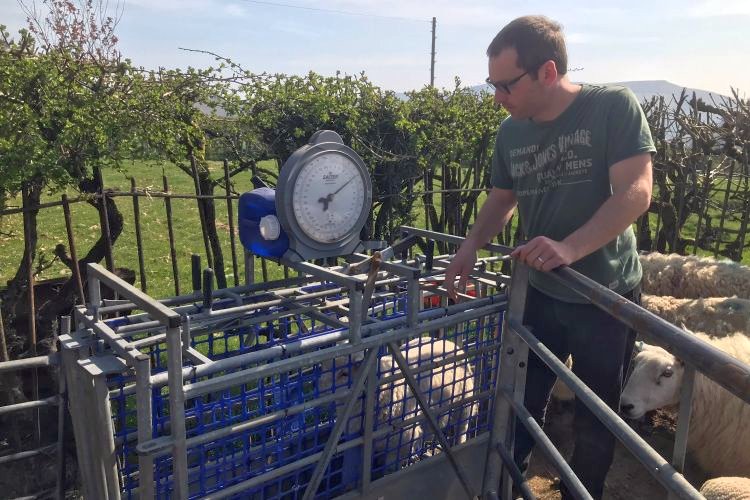
Data-driven agriculture is being promoted as a way to ensure that the Welsh sheep sector is profitable and sustainable while promoting flock health.
One south Wales farmer, who is part of an animal health project that involves over 250 farms, is seeing benefits from regularly weighing livestock after spring lambing.
Hybu Cig Cymru – Meat Promotion Wales (HCC) is promoting measuring daily live weight gain as part of the Stoc+ project, which aims to boost flock and herd health.
Dr Rebekah Stuart, who leads the Stoc+ project, explained that farmers can see 'multiple benefits' from monitoring lamb performance.
"Weighing lambs regularly will help farmers estimate the amount of days to finish, evaluate the lamb and feed performance, and identify whether changes in any new management practices are having an effect," she said.
“The regular monitoring of lamb growth will ensure that any problems and poor performing lambs can be identified early and adjustments can be made accordingly.
"It will also aid in the control of parasites which could be affecting lambs’ growth.”
The team have also identified a number of ambassadors who include farmers and veterinary practitioners.
Their role includes encouraging others to get involved and demonstrating the benefits of proactive health planning in terms of animal health and farm profitability.
Gwyn Johnson from Pontypridd is one of the farm ambassadors for the project and has seen benefits of monitoring lamb performance.
Mr Johnson has an upland farm with 500 ewes and 120 replacement ewe lambs, and outwinters store cattle.
“Replacement ewe lambs are weighed and tagged at birth," he explained, adding that this information is recorded in an Electronic Identification (EID) database which is linked to the ram.
"The ewe lambs are weighed at 8 weeks and at intervals prior to and following weaning," Mr Johnson added.
“The lambs’ 8-week weight gives us an indication of their dams’ maternal ability; the lambs with the greatest daily live weight gain are those most likely to be kept as replacements.
"The growth of ewe lambs also gives a valuable insight into how the main group of lambs are performing.
"High daily live weight gain is indicative of good animal health and also the eventual number of days to slaughter. Both of which are main drivers in flock profitability.”
Stoc+ is a five-year Welsh government and EU-funded initiative aiming to promote proactive flock and herd health planning to ensure a more profitable and sustainable red meat sector in Wales.
